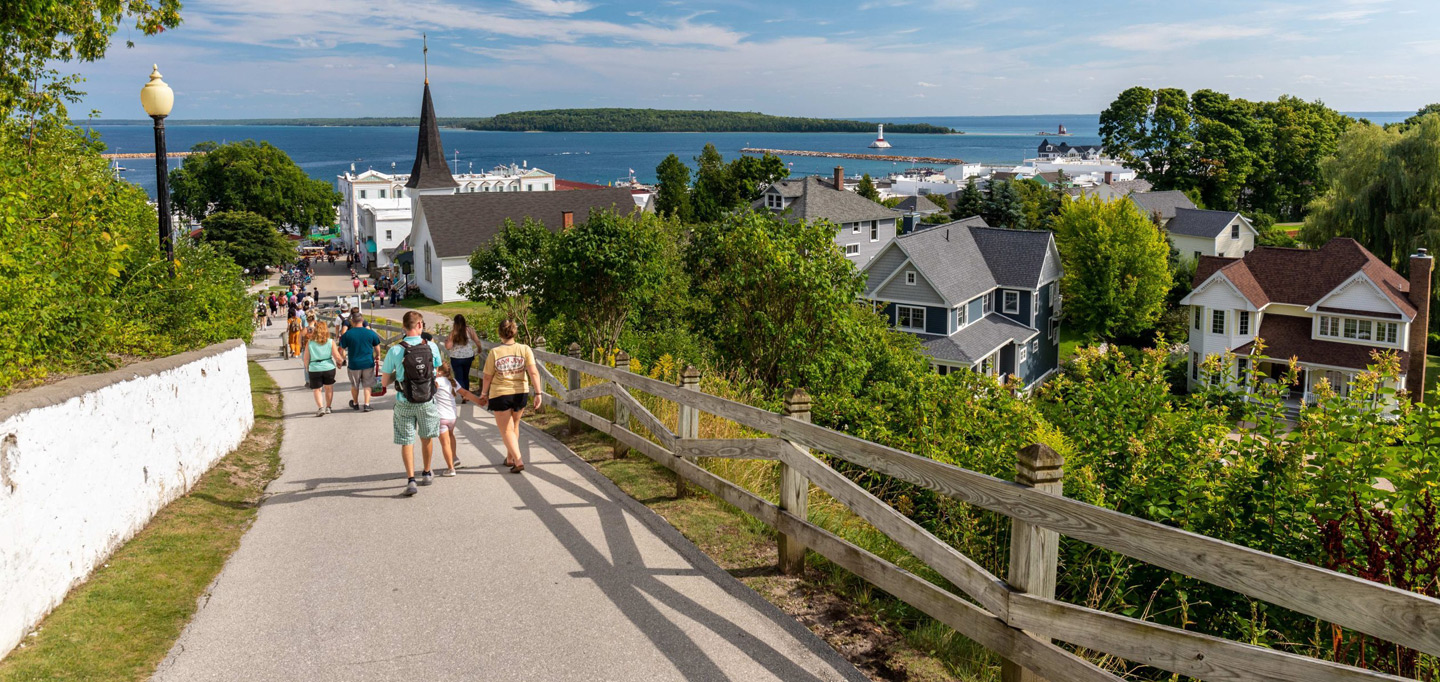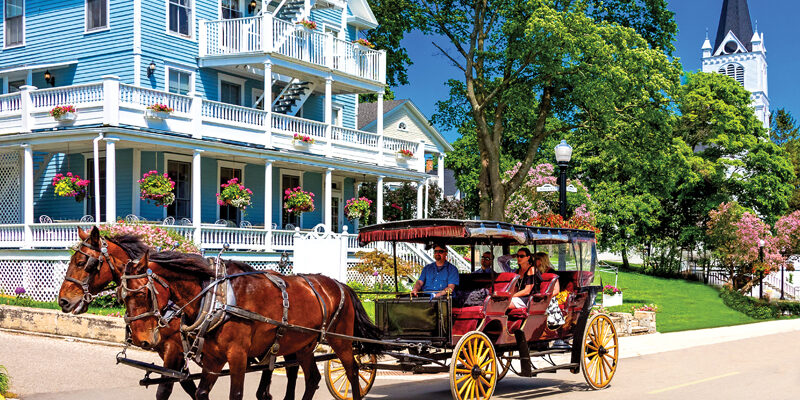Mackinac Island: Celebrating 150 Years as a National Park turned State Park and Michigan’s Crown Jewel
This year marks the 150th anniversary of Mackinac Island’s designation as a national park, a milestone that highlights its rich history, breathtaking natural beauty, and enduring cultural significance. Though it was once the second national park in the United States, Mackinac Island’s status changed over time, and today it stands as Michigan’s first state park—a beloved destination that continues to captivate visitors with its historic charm and pristine landscapes.
The Birth of Mackinac National Park (1875)
Mackinac Island’s history stretches back thousands of years, long before it became a national park. The island was home to the Anishinaabe people, including the Odawa, Ojibwa, and Potawatomi tribes, who considered it a sacred place. They believed that the island was the home of Gitche Manitou, the Great Spirit, and its limestone formations and towering bluffs held deep spiritual significance.
European exploration of the area began in the 17th century, with French fur traders and missionaries arriving on the island. By the late 18th century, Mackinac Island had become a strategic military and trading post, culminating in the construction of Fort Mackinac in 1780 by the British during the American Revolution. The fort remained an important military installation through the War of 1812, during which control of the island shifted between the British and Americans before ultimately becoming part of the United States.
Recognizing its natural beauty and historical importance, the U.S. government established Mackinac National Park on March 3, 1875—making it the second national park in the United States, following Yellowstone (established in 1872). Covering 1,044 acres, the park protected much of the island’s rugged terrain, limestone formations, and dense forests. The federal government also maintained Fort Mackinac as a military outpost within the park, making it one of the only national parks at the time with an active garrison.
Transition to a Michigan State Park (1895)
Unlike Yellowstone and other national parks that followed, Mackinac’s small size and remote location posed challenges for federal management. With limited resources to maintain the park, Congress eventually decided to transfer control of Mackinac National Park to the state of Michigan. In 1895, the federal government decommissioned Fort Mackinac and turned the land over to the state, establishing Mackinac Island State Park—the first state park in Michigan.
This transition ensured that Mackinac Island remained protected while allowing Michigan to oversee its maintenance and development. Since then, Mackinac Island State Park has grown to encompass over 80% of the island’s land, preserving its forests, cliffs, and historical sites while also allowing for carefully managed tourism.

How Mackinac Island State Park is Maintained Today
Mackinac Island State Park has become one of the most beloved destinations in Michigan, offering visitors a rare opportunity to experience a place largely untouched by modern development. Unlike most tourist locations, Mackinac Island has banned automobiles since 1898, meaning that travel around the island is limited to bicycles, horse-drawn carriages, and walking—enhancing its historical charm and preserving its environment.
Today, the park is managed by the Mackinac Island State Park Commission, which ensures that its natural beauty and historic sites remain protected while welcoming over one million visitors annually. Key aspects of park maintenance include:
-
Historic Preservation: Fort Mackinac, along with several other 18th- and 19th-century buildings, has been carefully restored to reflect its historical significance. Visitors can explore original barracks, officer quarters, and military outposts to experience life on Mackinac during its days as a strategic military post.
-
Natural Conservation: The park protects diverse ecosystems, including dense cedar forests, dramatic limestone bluffs, and rare wildflowers. Efforts are made to maintain hiking trails, prevent erosion, and manage invasive species to keep the island’s landscape pristine.
-
Tourism Management: Despite its popularity, Mackinac Island carefully balances conservation with tourism. The absence of cars reduces pollution and protects the island’s fragile environment, while strict building regulations preserve its historic character.
-
Cultural and Educational Programs: The park offers guided tours, reenactments, and interpretive programs that educate visitors about the island’s Indigenous history, military past, and ecological significance.
Mackinac Island’s Legacy at 150 Years
From its beginnings as a sacred Indigenous site to its designation as a national park and its evolution into Michigan’s premier state park, Mackinac Island has undergone remarkable transformations while remaining true to its heritage. Today, it stands as a living museum, where history and nature coexist in harmony.
As Mackinac Island celebrates 150 years since its establishment as a national park, it remains a cherished symbol of Michigan’s commitment to conservation and preservation. Whether exploring the historic Grand Hotel, marveling at Arch Rock, or simply enjoying a leisurely carriage ride through the park, visitors continue to experience the timeless beauty that has made Mackinac Island a treasured landmark for generations.
With ongoing preservation efforts, Mackinac Island is poised to remain a sanctuary of natural beauty and historical significance for another 150 years and beyond.


































